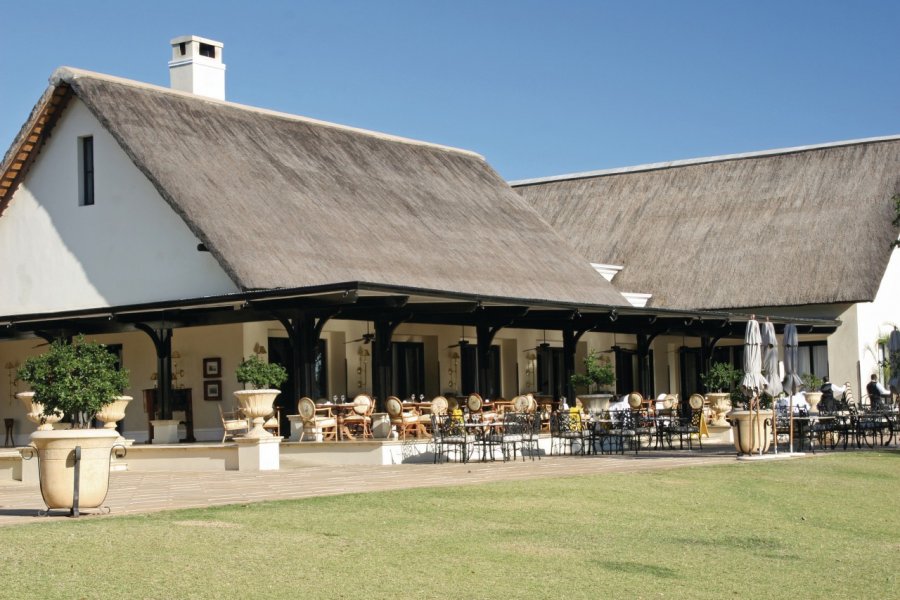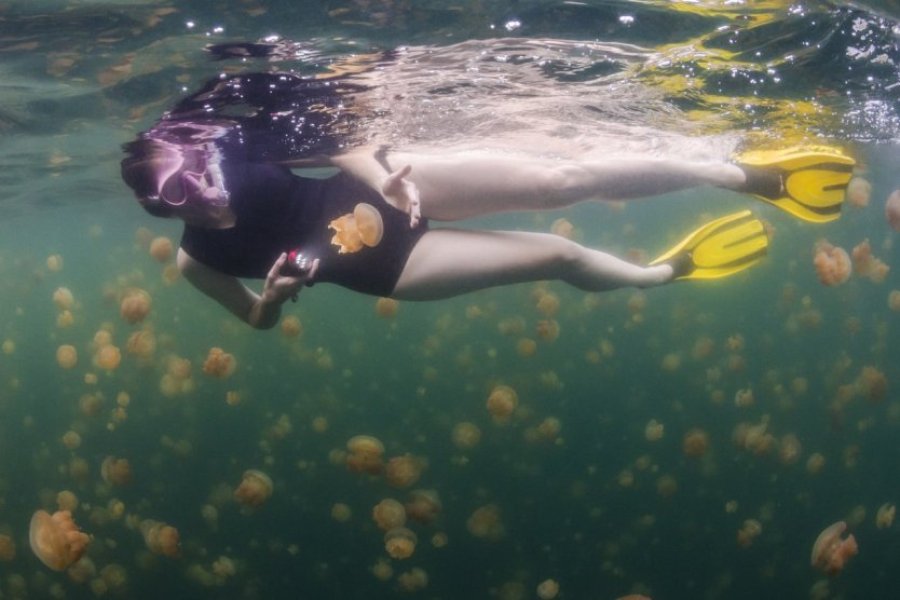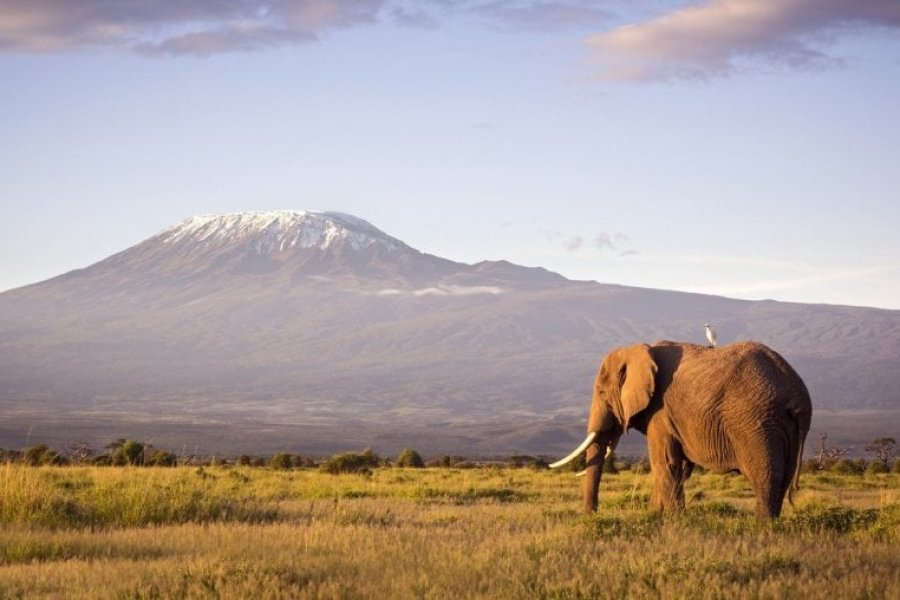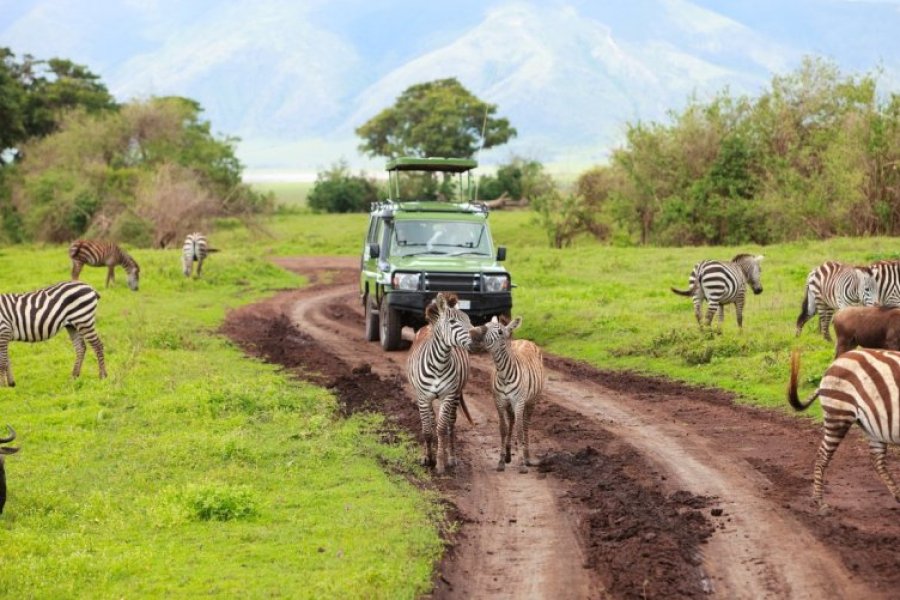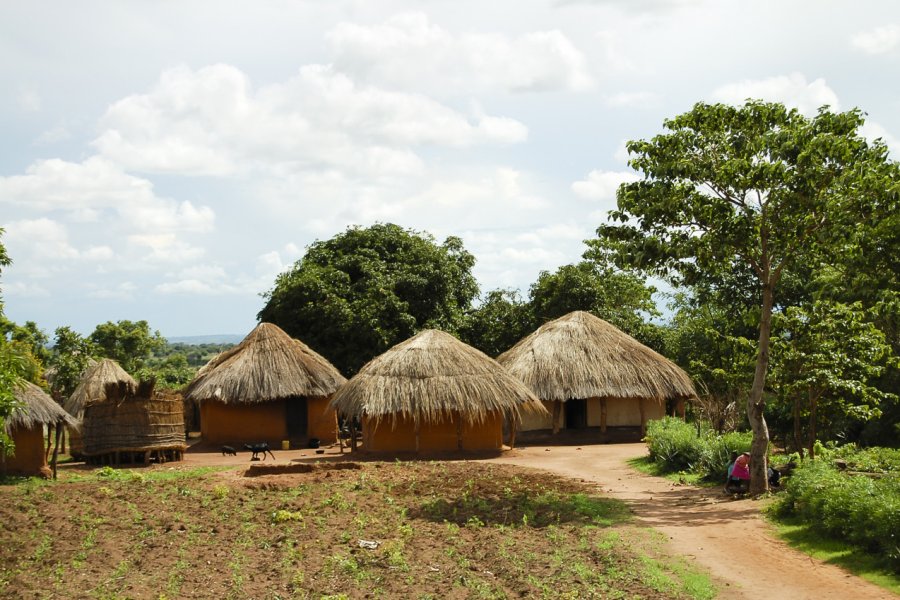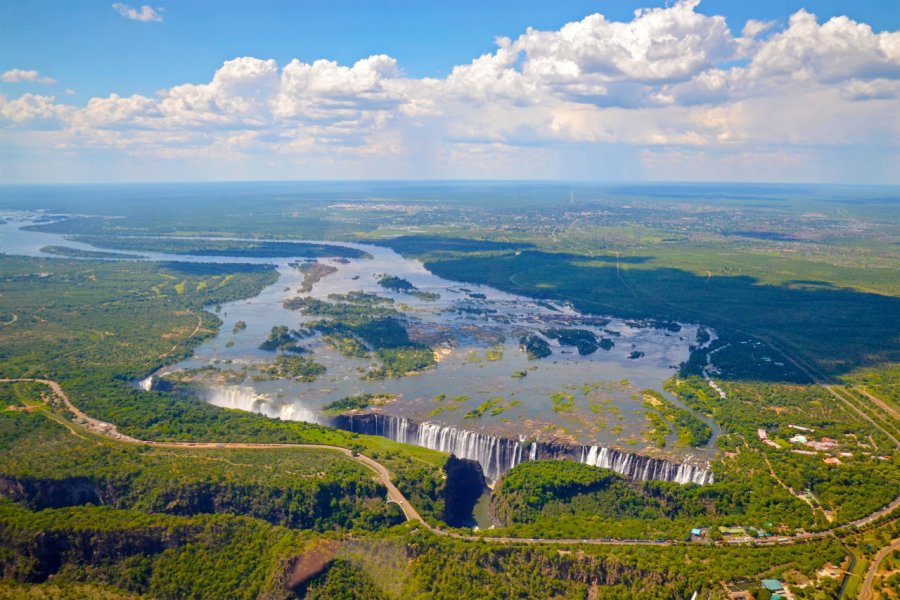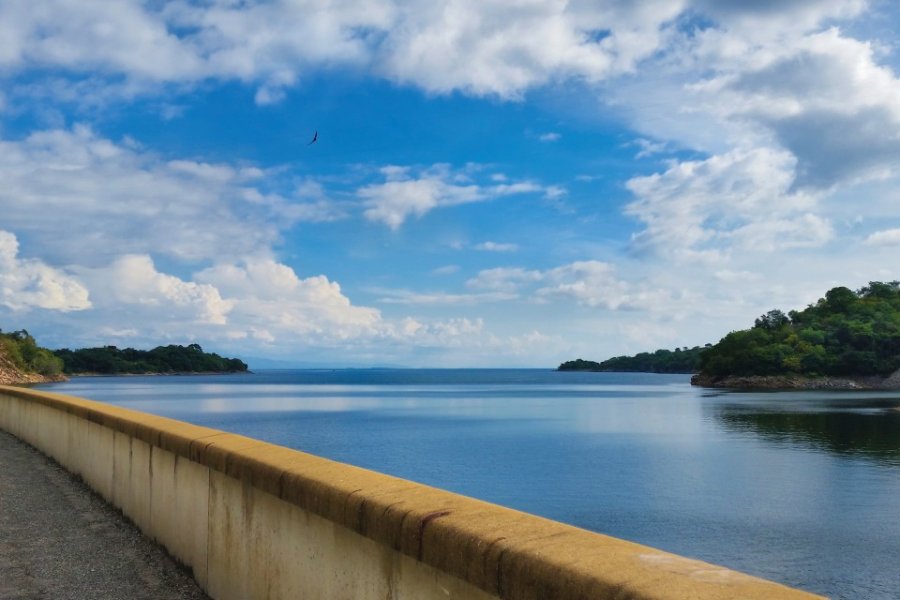Travel guide Zambia
Zambia is a country in southern Africa, landlocked among eight other countries, whose capital is Lusaka. It is not a mass tourism destination despite one major attraction: the 108 m Victoria Falls from the Zambezi River shared with Zimbabwe's neighbour. Listed as a World Heritage Site, they are part of two national parks, Mosi-oa-Tunya National Park in Zambia and Victoria Falls National Park in Zimbabwe. The classic is a swim in the Zambezi River at the top of Victoria Falls, whose local name Mosi-oa-Tunya (roaring smoke) sums it up well! Downstream of the falls, you can cross the bridge over the river. Seen from below as seen from above, the show is just as striking. The other attraction of the country is its wildlife. Within the immense Kafue National Park it is possible to observe rare antelopes, blue wildebeests, wild dogs... As for the South Luangwa Nature Reserve, it offers one of the most beautiful concentrations of wild animals in Africa, giraffes, lions, zebras, elephants, which can be discovered on memorable 4x4 safaris and even on walking safaris, Zambia being the flagship destination for this practice. Flying over the Victoria Falls by helicopter, enjoying a luxury bivouac in a nature reserve, hunting big game (in compliance with the law, of course), remain luxury tourist services. Remember that more than half of the population lives below the poverty line. Don't leave without your favorite travel guide.
What to see, what to do Zambia?
-
Book an activity
-
Customized travel
- The most beautiful cities Zambia
When to go Zambia ?
When to go to Zambia? The dry season between May and November is the most pleasant time to stay in Zambia. The rainy season is between November and April, when the vegetation is lush, but many roads are impassable. The months to avoid are January and February which are the rainiest. The most pleasant months are from the beginning of May to the end of August, but from April the atmosphere is pleasant. For safaris, the best period is from early June to late October. All in all, Zambia can be visited most of the year!
Suggested addresses Zambia
Travel Zambia
-
Find a hotel
-
Car Rental
-
International e-SIM package
-
Find a local agency
On vient en Zambie classiquement pour deux raisons : avoir le privilège d'admirer les Chutes Victoria et faire un safari de haute qualité dans un pays riche en faune sauvage. De multiples activités sont possibles : rafting, saut à l'élastique, autant de raison de s'arrêter plusieurs jours dans la région de Livingstone et des chutes. Les différents parcs nationaux du pays offrent des safaris variés en paysages et en lodges et camps, plusieurs choix d'itinéraires sont possibles entre South Luangwa, Lower Zambezi et Kafue, les trois parcs nationaux principaux.
On peut aussi choisir de venir en Zambie pour tenter une aventure hors des sentiers battus : aller au parc national de Liuwa Plain pour voir la seconde plus grande migration de gnous en Afrique, explorer en 4x4 le nord du pays, par exemple jusqu'au Kasanka NP on vient voir les milliers de chauves-souris flying fox immenses se rassembler. Autant d'itinéraires possibles.
Find unique Stay Offers with our Partners
How to go Zambia
How to go alone
It is an original and economical solution that offers you a real African adventure in freedom and in contact with the population. Ideal for a small budget. But if you want to go on safari, you will still have to hire professional local guides, which is still expensive.
How to go on a tour
Travel agencies offer luxury Zambia safaris for the well-funded with the assurance of seeing wildlife in all its splendor. Almost all of the tours offered include a stop at Victoria Falls, without which the discovery of Zambia would not be complete.
How to get around
Be aware that driving in Zambia is on the left and that roads are often in poor condition. Rather than driving yourself, rent a vehicle with a driver. You can also use public transportation, such as buses or trains, but they are not very comfortable. The most efficient option is to fly. Domestic airlines serve the major cities. This is the fastest way to get from Lusaka to Livingstone and Victoria Falls.
Featured articles Zambia
Discover Zambia
Zambia is a mysterious country for the French, unfamiliar with its English colonial history and its ethnic past, in the heart of Southern Africa. There is however a thousand and one reasons to look into the history of this country which knew the Bantu invasion before the colonization which formed its ethnic patchwork so rich in ceremonies and traditions. The way of life of its inhabitants between rural life and African cosmopolitan modernity is particular. One comes here to appreciate the wilderness of its national parks that unfolds around its gigantic rivers, especially its numerous savannah animals that make the reputation of safaris here, especially elephants, lions and leopards. Victoria Falls remains the highlight of a visit to Zambia, breaking the flow of the great Zambezi River that marks most of its borders.
Pictures and images Zambia
The 12 keywords Zambia
1. Big Five

This expression, originally used by hunters to define the most dangerous animals, has become synonymous with a successful safari. The 5 nominees are: the elephant, the buffalo, the rhinoceros, the lion and the leopard. Victims of poaching, rhinos are rare, but in Zambia can be observed while walking safari in Mosi-oa-Thunya NP.
2. Boat cruise

This is the nautical version of the game drive to observe wildlife by boat. On the Zambezi River in the Lower Zambezi NP and on the Victoria Falls side, on the Kafue River in the eponymous park or on Lake Kariba. A way to get closer to crocodiles and hippos, to observe birds and elephants without fear (or almost).
3. Bush camp
The bush refers to a landscape of thorny shrubs and scattered acacia trees. The bush camp is in the heart of a national park: safari tents or reed and straw huts, where all around the safaris are incredible. During the day we contemplate the plain where the herbivores drink, at night we discuss around the fire in the boma.
4. Leaders
In Zambia, village chiefs retain a major influence throughout the country and are highly respected. They regulate the daily life of the villages and exercise the decisions of justice. They are the spokespersons and advisors of the community to the government and have the right to decide on projects planned on their land.
5. Copper
Zambia is one of the world's largest producers of copper, located mainly in the Copperbelt region. It is the country's primary industrial asset and its primary export revenue. World copper prices partly determine the country's economy and the value of the national currency.
6. Falls
Of course, there are the Victoria Falls, a 1.7 km wide and 100 meters high cataract where the powerful waters of the Zambezi River rush down with great noise. But there are also other lesser known falls, such as the magnificent Lumangwe and Ntumbachushi Falls, close to rock paintings (to the north) or Ngonye Falls (to the west).
7. Game drive

A game drive is a classic safari aboard a huge, fully open 4x4 with three raised benches above the driver-guide, who tracks the animals and gives explanations on the wildlife. We do two per day: 5am to 9am and from 4pm to 8pm, when the animals are most active, with a coffee break in the morning and a drink in the evening.
8. Kuomboka
Zambia's most famous ceremony takes place when the Barotseland plains are flooded by the Zambezi in March-April. King Lozi leaves his winter palace to reach his summer residence. During the 6-hour journey, the king and queen are escorted by the locals on boats, with musicians playing drums and xylophones.
9. Sausage Tree
The sausage tree (Kigelia africana) is the most curious tree of the African savannah. It can be recognized by its very hard oblong fruits, similar to giant sausages that can measure more than 50 cm long, 115 cm in diameter and weigh up to 5 kg. It is better not to linger underneath! The wildlife loves them, especially the hippos.
10. Walking safari
This walking safari in the middle of a national park, supervised by armed rangers, consists in criss-crossing the bush to observe the animals and their tracks. Elephants, buffalos and other herbivores, but not the big cats that flee at our approach. You have to wear neutral colors, walk in single file and remain silent. The big thrill!
11. Wild Dog

Sometimes called the wild dog (Lycaon pictus), the African wild dog is also an endangered animal. There are only 6,000 of them left on the continent. Zambia boasts a successful reintroduction program and you may be lucky enough to see a group of wild dogs on your South Luangwa safari.
12. Zambezi
The fourth largest river in Africa gave its name to the country in which it originates in the west. The Zambezi River crosses the southern part of the country from west to east, forming the border with Namibia and Zimbabwe. It offers magnificent landscapes and exceptional safaris, from the Victoria Falls to the Lower Zambezi NP, via Lake Kariba.
You are from here, if...
You are not afraid to eat caterpillars. Called caterpillar, this mopane worm is sometimes found on the menu of local restaurants, and even offered as a tasting for tourists. Grilled over a wood fire, it is a great source of protein.
You drink chibuku. A local craft beer that Zambians love, but quite strange for European taste buds. Thick, it is macerated from corn or sorghum seeds.
You consult a sangoma when you are sick. A traditional medicine healer that involves the use of plants, animal parts or minerals for spiritual and divinatory therapies. They usually practice in villages.
You are never in a hurry. The notion of time in Zambia is different from ours: a 5-hour drive can take 8 hours without anyone being alarmed. Zambians will like to tell you with humour that God gave the watch to the Europeans and the time to the Africans.

